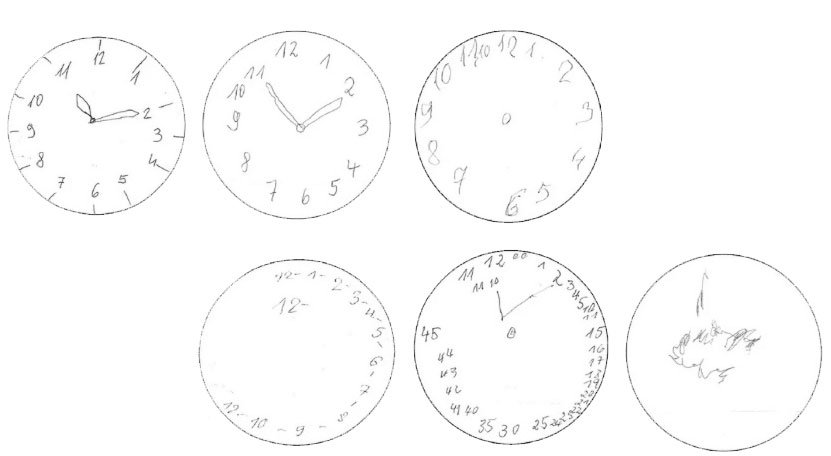Digital clock test: Detect dementia with neural networks
Source: Heise.de added 17th Dec 2020Erlangen researchers have employed artificial neural networks with clock tests in order to teach them how to evaluate them independently. On this basis, they want to bring out open source software that will make it easier for neurological specialists to diagnose dementia.
The 1993 the clock test published by the psychiatrist Kenneth Shulman, the test subjects should enter the times of the day in a circle printed on a piece of paper and the hands that should represent a given time. It is supposed to help diagnose spatial disorientation and dementia.
Researchers at the Chair for Pattern Recognition at the Friedrich-Alexander University Erlangen-Nürnberg (FAU) have created artificial neural networks with 2500 fed such tests. The tests come from the specialist in neurology and psychiatry Prof. Dr. med. Markus Weih, who collected them for four years in his practice from 1315 patients. The data was digitized and entered into the neural networks. These should meanwhile be able to correctly assign in more than 96 percent of the cases whether it is a pathological finding; In over 98 percent, the assigned disease level is correct, according to an article in the specialist magazine Nature .
Second opinion via app The attending medical professional awards the Tests usually scores, similar to school grades between one and six. One point means a perfect solution, at three the clock is already faulty, maybe only one pointer is drawn, but the visual-spatial representation is still ok. As the number of points increases, the drawn clocks become more and more unclear: the spaces between the digits are uneven, the order is incorrect, only a few digits are entered, they are outside the circle, are just scribbles. From three points onwards, medical professionals assume a relevant cognitive disorder, often in the context of dementia.
In Erlangen, images of computed tomography and magnetic resonance tomography and X-ray images are otherwise fed into the artificial networks in order to make them useful for the To be able to use diagnostics. In contrast, the watch tests were drawings, explains Prof. Andreas Maier from the Chair of Pattern Recognition. Medical professionals should also be able to use the watch test in the future, with the help of a special app that is still to come on the market, they could take pictures of tests and get an evaluation immediately. Anyone who is unsure about the assessment of a test receives a kind of second opinion.
(anw)
media: Heise.de keywords: App Open Source Software
Related posts
Notice: Undefined variable: all_related in /var/www/vhosts/rondea.com/httpdocs/wp-content/themes/rondea-2-0/single-article.php on line 88
Notice: Undefined variable: all_related in /var/www/vhosts/rondea.com/httpdocs/wp-content/themes/rondea-2-0/single-article.php on line 88
Related Products
Notice: Undefined variable: all_related in /var/www/vhosts/rondea.com/httpdocs/wp-content/themes/rondea-2-0/single-article.php on line 91
Warning: Invalid argument supplied for foreach() in /var/www/vhosts/rondea.com/httpdocs/wp-content/themes/rondea-2-0/single-article.php on line 91
